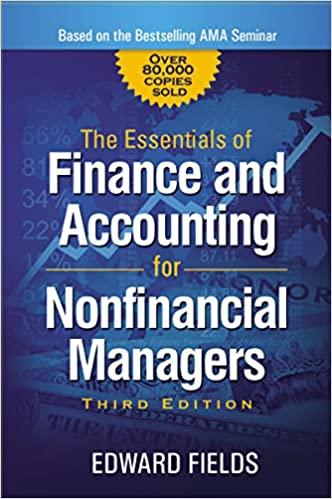

 I just need help with #8. Please tell me what additional information you need
I just need help with #8. Please tell me what additional information you need
The management of Zigby Manufacturing prepared the following estimated balance sheet for March 2019. ZIGBY MANUFACTURING Estimated Balance Sheet March 31, 2019 Assets Cash Accounts receivable Raw materials inventory Finished goods inventory Total current assets Equipment Accumulated depreciation Equipment, net Total assets Liabilities and Equity Accounts payable Short-term notes payable Total current liabilities Long-term note payable Total liabilities Common stock Retained earnings Total stockholders' equity Total liabilities and equity 65,000 437,760 90,200 308,028 900,988 630,000 (165,000) 465,000 $ 1,365,988 $ 204,500 27,000 231,500 515,000 746,500 350,000 269,488 619,488 $ 1,365,988 To prepare a master budget for April, May, and June of 2019, management gathers the following information. a. Sales for March total 22,800 units. Forecasted sales in units are as follows: April, 22,800; May, 16,000; June, 23,000; and July, 22,800. Sales of 255,000 units are forecasted for the entire year. The product's selling price is $24.00 per unit and its total product cost is $19.30 per unit. b. Company policy calls for a given month's ending raw materials inventory to equal 50% of the next month's materials requirements The March 31 raw materials inventory is 4,510 units, which complies with the policy. The expected June 30 ending raw materials inventory is 5,500 units. Raw materials cost $20 per unit. Each finished unit requires 0.50 units of raw materials. c. Company policy calls for a given month's ending finished goods inventory to equal 70% of the next month's expected unit sales. The March 31 finished goods inventory is 15,960 units, which complies with the policy. d. Each finished unit requires 0.50 hours of direct labor at a rate of $11 per hour. e. Overhead is allocated based on direct labor hours. The predetermined variable overhead rate is $4.20 per direct labor hour. Depreciation of $35,020 per month is treated as fixed factory overhead. f. Sales representatives' commissions are 10% of sales and are paid in the month of the sales. The sales manager's monthly salary is $4,500. g. Monthly general and administrative expenses include $27,000 administrative salaries and 0.6% monthly interest on the long-term note payable. h. The company expects 20% of sales to be for cash and the remaining 80% on credit. Receivables are collected in full in the month following the sale (none are collected in the month of the sale). i. All raw materials purchases are on credit, and no payables arise from any other transactions. One month's raw materials purchases are fully paid in the next month. j. The minimum ending cash balance for all months is $55,000. If necessary, the company borrows enough cash using a short-term note to reach the minimum. Short-term notes require an interest payment of 1% at each month-end (before any repayment). If the ending cash balance exceeds the minimum, the excess will be applied to repaying the short-term notes payable balance. k. Dividends of $25,000 are to be declared and paid in May. I. No cash payments for income taxes are to be made during the second calendar quarter. Income tax will be assessed at 40% in the quarter and paid in the third calendar quarter. m. Equipment purchases of $145,000 are budgeted for the last day of June. Required: Prepare the following budgets and other financial information as required. All budgets and other financial information should be prepared for the second calendar quarter, except as otherwise noted below. (Round calculations up to the nearest whole dollar, except for the amount of cash sales, which should be rounded down to the nearest whole dollar.): Required: Prepare the following budgets and other financial information as required. All budgets and other financial information should be prepared for the second calendar quarter, except as otherwise noted below. (Round calculations up to the nearest whole dollar, except for the amount of cash sales, which should be rounded down to the nearest whole dollar.): 1. Sales budget. 2. Production budget. 3. Raw materials budget. 4. Direct labor budget. 5. Factory overhead budget. 6. Selling expense budget. 7. General and administrative expense budget. 8. Cash budget. 9. Budgeted income statement for the entire second quarter (not for each month separately). 10. Budgeted balance sheet


 I just need help with #8. Please tell me what additional information you need
I just need help with #8. Please tell me what additional information you need





